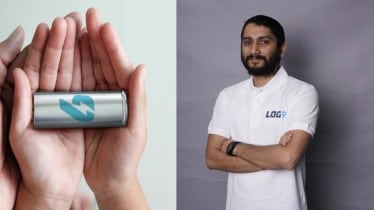By Anshul Sharma
Li-ion batteries are currently the preferred choice for electric mobility around the globe. For its efficient power density, small size, higher cycle life, high cell voltage, optimal energy and weight ratio, Li-ion chemistry stands out in the EV mobility market. However, there are certain challenges with Li-ion batteries as well, some of which involve long charging hours and limited driving range. Furthermore, the limited availability of lithium, high cost of batteries, high rate of degradation and
safety concerns are slowing down the mass acceptance of Li-ion batteries.
Speaking of range anxiety, the lack of high range Li-ion powered electric vehicles in the market is one of the major reasons why people still continue to prefer IC engine vehicles. The limited number of electric vehicles offering a range over 250 -300 kms and their high cost of acquisition often restricts business stakeholders to adopt EVs for long haul commercial vehicles.
So, if Li-ion battery alone is not enough, then what can be the preferred and most effective energy solution for today’s long-haul commercial vehicles? A hybrid energy solution – Li-ion and Aluminium Fuel Cell Aluminium Fuel Cells (AFCs) is an emerging technology that has the potential to solve the challenges faced by Li-ion batteries. AFC has high energy density, which can provide long driving range to the vehicles. It is an energy generation system that uses Aluminium as fuel. The technical process involves consumption of Aluminium and its conversion to Aluminium Hydroxide, which can further be converted back to Aluminium at the smelters. This complete cycle of using Aluminium as fuel in AFC, collecting back the Aluminium hydroxide, converting it to Aluminium, and using that recycled Aluminium again in the AFC as a fuel makes AFC technology highly reliable and scalable.
For the long-haul transportation sector in India, AFC is a much more commercially viable and practical option. India is one of the biggest producers of Aluminium, ensuring reasonable cost of Aluminium fuel. However, there are certain unsolved challenges in AFC as well. One of the major challenges is availability of sudden power required by vehicles in situations like quick acceleration.
This issue can be resolved by using AFC in combination with Li-ion batteries in electric vehicles. The combination of Li-ion battery as energy storage solution for stable power delivery to the vehicles alongside the AFC as an on-board refuellable energy generation solution can be the next-gen ultimate solution for the electric mobility sector.
Solving issues of range anxiety and long charging hours
While the li-ion battery can provide power directly to the vehicle, the AFC can be used to charge the installed Li-ion battery. This combination can solve the individual problems of both the technologies. The hybrid energy solution can provide driving range of more than 1000 kilometres, bringing down the requirement of multiple charging stations as well as the need for long charging hours.
The AFC can kick in as soon as the Li-ion battery’s SOC gets low and can provide an on-board charging solution to the li-ion battery. As the vehicle will be running on a combination of AFC and Li-ion battery, the rate of consumption of Aluminium in the AFC will also be slow, which will ultimately minimize the need of Aluminium refuelling. Aluminium refuelling in AFCs generally require only around 20-30 minutes, depending upon the size of the system, and hence the issue of long charging hours of Li-ion battery at the charging stations will be solved too.
In Conclusion
Sustainability of any technology and its complete supply chain define its holistic credibility for the planet. The combination of Li-ion battery and the Aluminium Fuel Cells can be the ultimate energy solution for heavy long-haul commercial vehicles sector, by solving pertinent issues like range anxiety, long charging hours and lack of availability of charging stations while being an environment-friendly solution.
The author, Anshul Sharma is Vice President – Aluminium Fuel Cells at Log9 Materials. Log9 is an indigenous deep-tech and advanced battery-tech startup.
Disclaimer: Views expressed are personal and do not reflect the official position or policy of Financial Express Online. Reproducing this content without permission is prohibited).
